How to get a plum tree to fruit – tips for a bigger and better harvest
If your plum tree is short of delicious plums, don't give up hope. Our guide has all the information you need
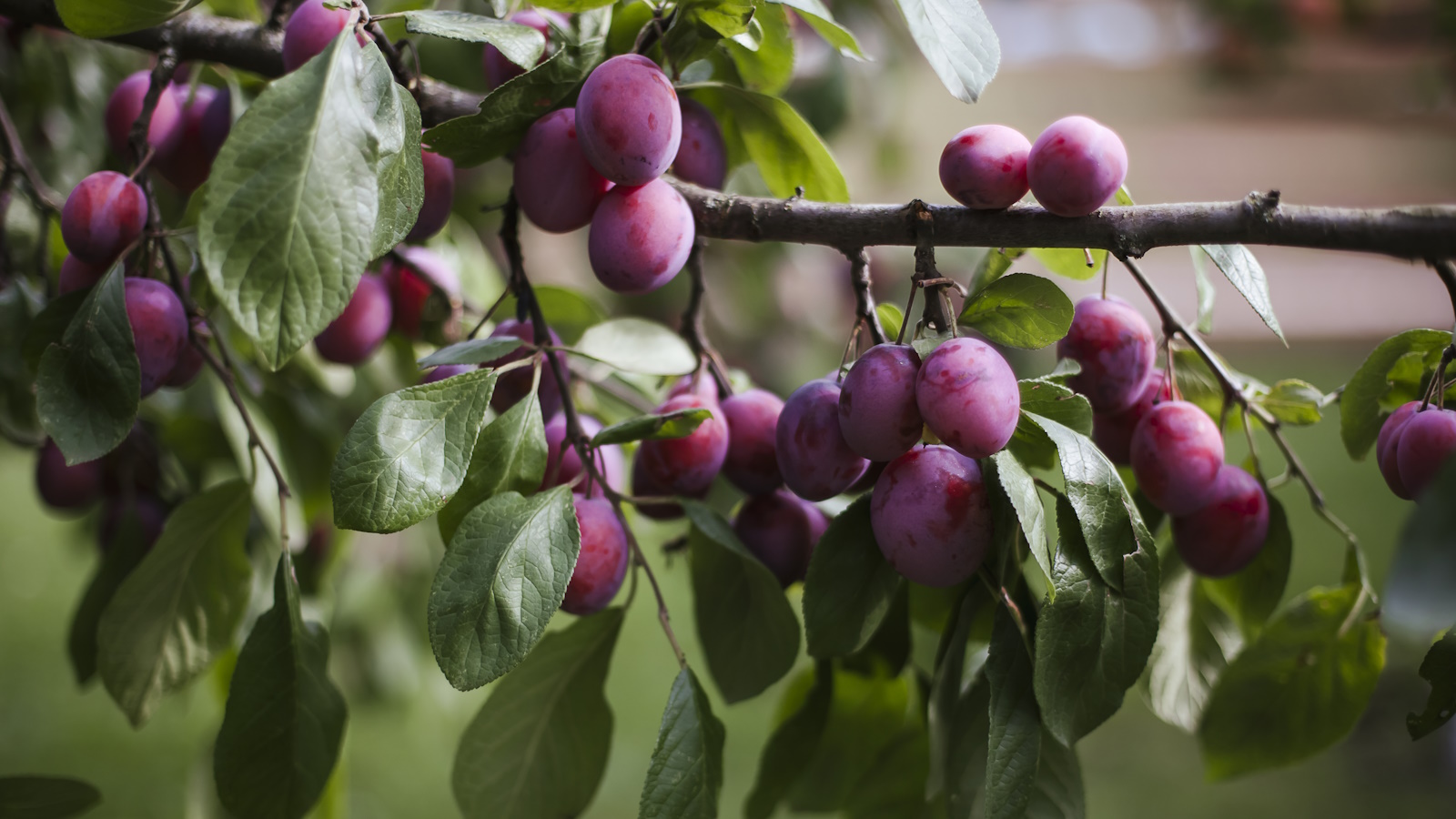

Growing a plum tree can be a rewarding experience for any gardener. Plums trees, Prunus domestica are members of the rose – or Rosaceae – family, and so unsurprisingly they put on a brilliant spring bloom display. They will typically produce singular, 5-petalled flowers in delicate shades of white and pink, which go on fade and fall before fruit production commences over the summer months.
If, however, your plum tree fails to bear fruit, it can be disappointing and a cause for concern. Plum trees are like any other fruit tree in that they are sensitive and often slightly temperamental, requiring specific conditions to produce tasty plums. For example, much the same as learning how to get a fig tree to fruit, and getting a damson tree to fruit, plum trees need a combination of ideal weather, nutrients, and a little help from pollinators.
As a professional gardener, I have grown plums in different places where I have worked across the UK and Italy. While I have had some bumper crops, I have also had some disappointing harvests. However, these bad years provided me with key lessons to learn from and here, I share all I know about the right approach to getting the best from your plum trees. So, whether you grow large plum trees in your borders, or small fruit trees in pots, I have all the information you need to succeed.
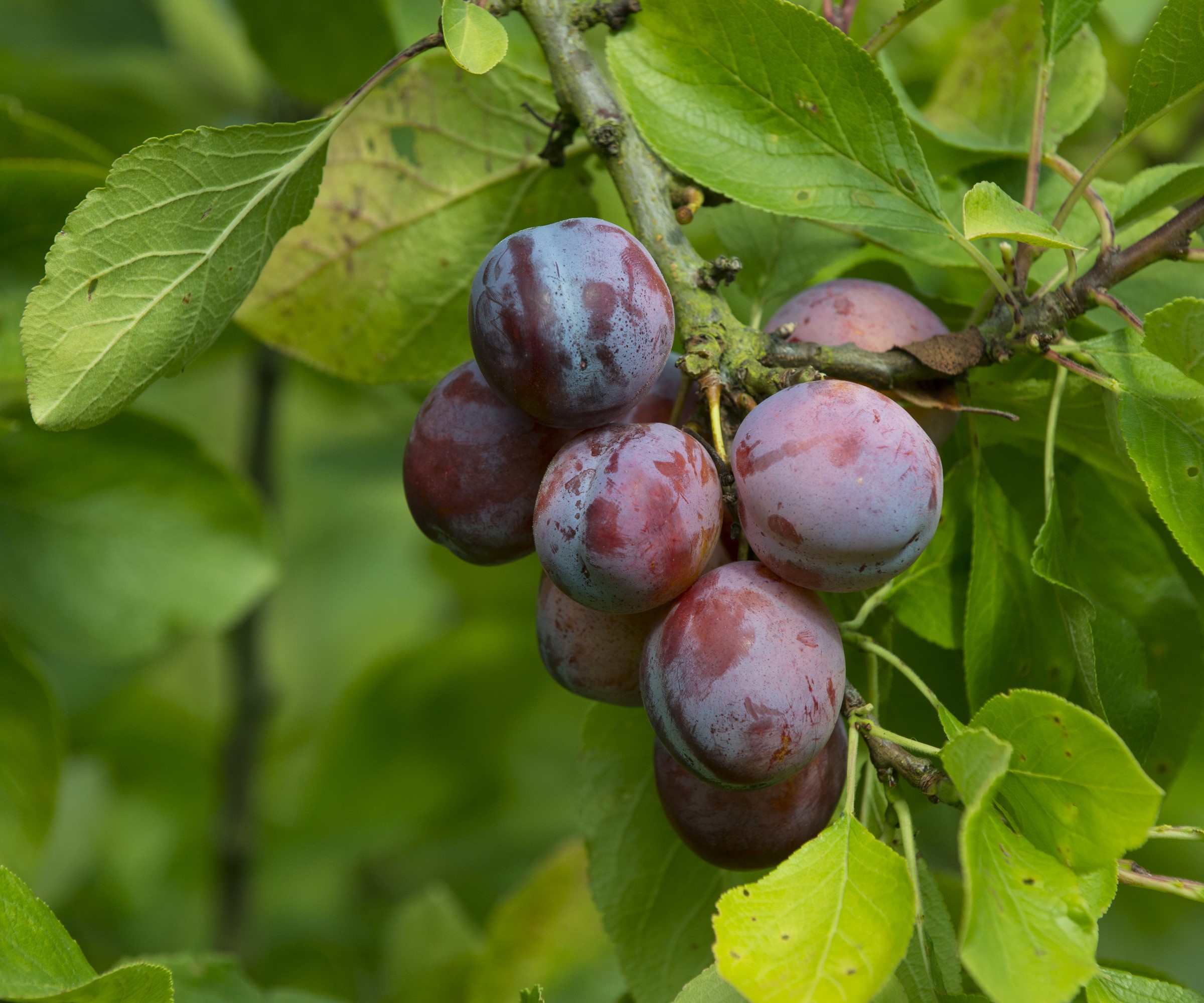
How to get a plum tree to fruit
Plum trees typically take three to five years to fruit, no matter which type of plum tree you grow, so a little patience will be required if you have recently planted a young tree in your yard. As soon as the flowers drop in spring, fruit production begins, and you should be able to see small swollen fruits forming over the summer. While this will vary depending on your US hardiness zone and the conditions in your yard, harvesting time tends to be around August to October, depending on the variety you grow. If, however, your plum tree has a small number of fruits or none at all, there are ways to encourage a better harvest the following year.
Provide ideal plum tree conditions
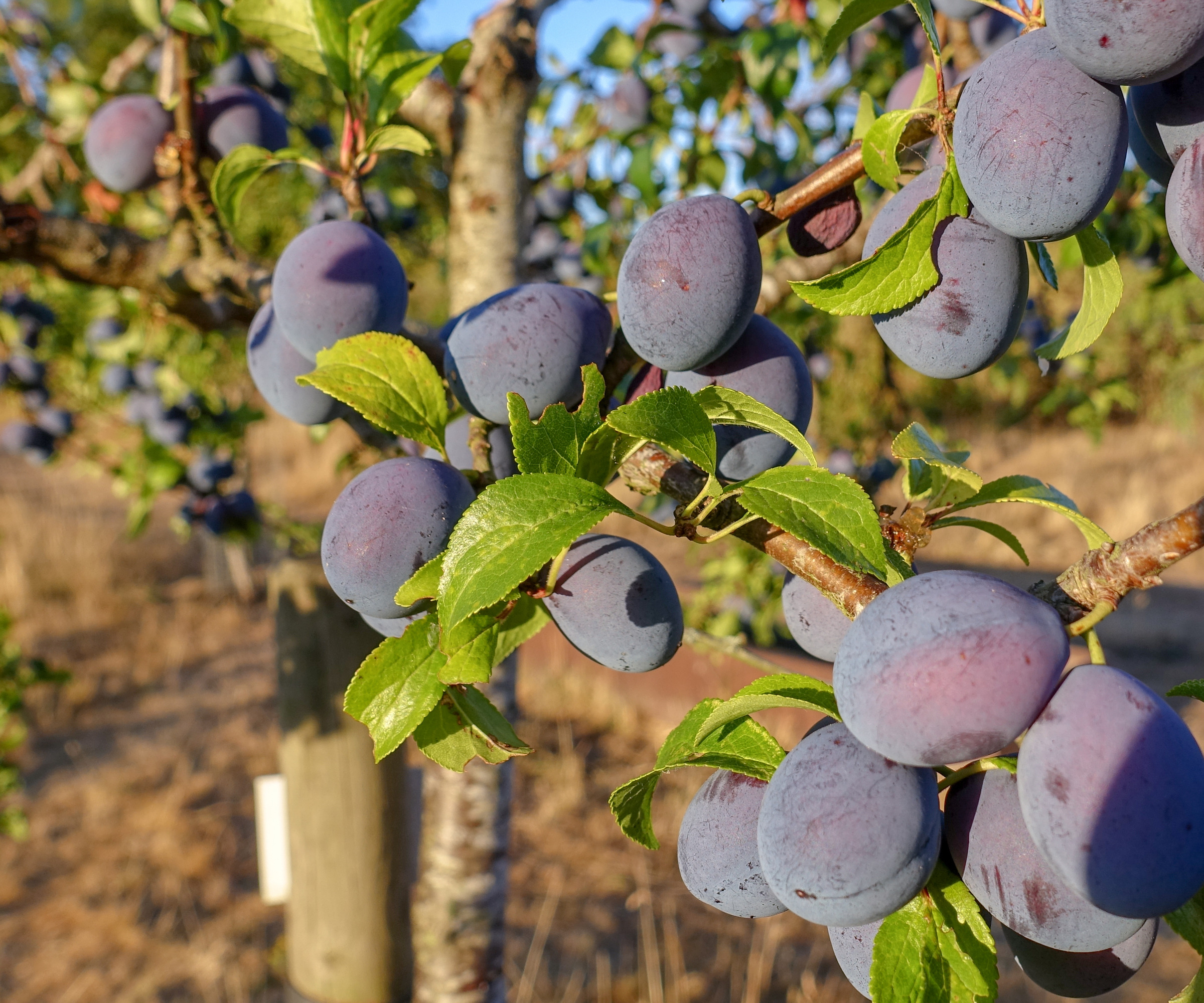
Plum trees fruit best in sheltered, sunny spots. If you have planted a plum tree in a position that is open to the elements, you might need to move your tree. If you grow dwarf fruit trees in pots, it will be much easier to switch locations, although you might have to ask a friend or neighbor for a helping hand.
Trees planted in your borders can be a challenge to lift and move, although smaller and younger specimens will be more receptive to change. The best time to do this is in early spring before they enter their active growth period.
Plum trees will respond well when grown in a warm, sheltered spot. I have grown plum trees against a wall, trained in a fan-like shape, and fruit tends to ripen well when it can benefit from the heat and protection of a wall.
Always avoid positioning plum trees in spots prone to heavy frosts or strong winds, which can damage the blossom and reduce fruiting.
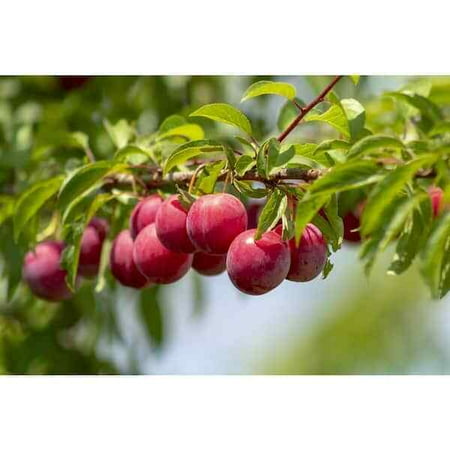
This 'Santa Rosa' plum tree produces a delicious fruit that is often referred to as the 'candy plum' in California where it was developed.
Pruning and feeding plums is important
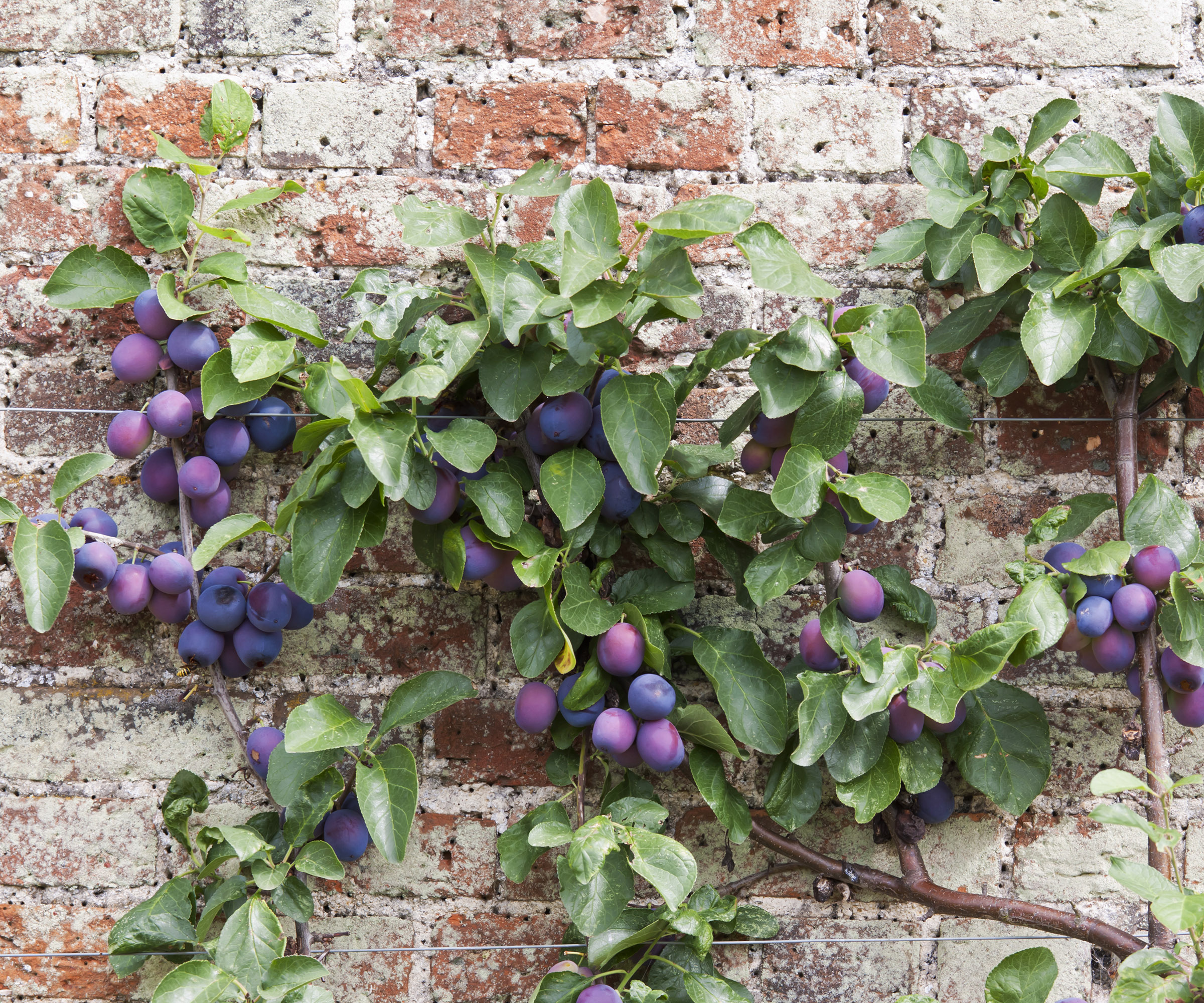
'Plum trees need a good amount of care throughout the gardening year,' says Drew Swainston, former professional gardener and gardens content editor at Homes & Gardens.
'Feeding your fruit trees is important, and fertilizers high in phosphorus will encourage blooming and fruiting,' Drew adds. I would suggest using something like this organic bone meal, available from Walmart, that will help your plum tree thrive with a high concentration of added phosphorous. This product can be used throughout spring and summer.
'Mulching is also a good idea for your fruit trees,' Drew says. 'Mulch will help to improve the soil health, as well as keep weeds away from the base of your tree. What's more, mulching will also help to retain moisture in the soil during the warmer months.' Organic mulch is available from Amazon.
Finally, be sure to prune plum trees at the right time every year. 'Pruning established plum trees is best done in summer,' Drew says. 'While this can vary on your location and climate, typically around June and July is when you should prune, removing dead and damaged branches, and creating an open shape by removing any inward growing stems. Just be careful not to damage any developing fruits.'
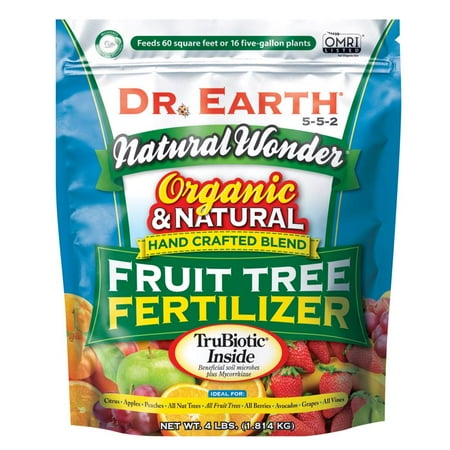
This Dr. Earth organic fruit tree fertilizer is ideal for cherry, apple and plum trees, helping to get the best harvest possible.

Drew qualified as a journalist and wrote for many websites and publications, before studying for a horticulture qualification. He worked as a professional gardener for several years, specializing in kitchen gardening. He's now bringing his expertise and passion to Homes & Gardens as a member of our team.
Encourage pollinators to your plot

All plum trees require pollination to produce fruit. Some plum varieties are self-fertile, such as 'Violette' and 'Jubilee', meaning that the tree can produce fruit on its own without needing the pollen from another tree.
However, most plum trees are not self-fertile, and so need another tree nearby to produce a good crop. Whichever variety you have, pollinators are vital if you want to reap the rewards of a bumper harvest towards the end of summer.
Pollination, whether on the same tree or a local specimen, is done by birds, bees, butterflies and moths. As gardeners, we can only do so much, and we must rely on the hard work of pollinators.
Incorporating plants for pollinators in your yard is therefore crucial, and filling your borders with nectar-rich and native blooms is a good idea. Perennials such as verbenas, coneflowers and salvias are known to be a hit with pollinators.
Alternatively, allow a patch of your yard to go wild, with cornflowers, clovers and daisies that can help early-to-rise pollinators in spring. Wildflower seed mixes are available from Amazon.

This bug hotel is sure to attract pollinators to your yard, helping to naturally maintain and improve the health of your plants and trees.
FAQs
My fruit tree is in the wrong location. When can I move it?
You should lift and move plum trees in early spring before the active growth period. There is always a risk that your tree might not survive the move, particularly for larger, older trees, so approach with care and caution. If you have a very old tree that does not fruit but has plenty of leaf cover, it is best to leave it where it is and enjoy the green foliage display.
How often should I repot my plum tree?
If you grow a plum tree in a pot, it is best to change containers every two to three years. Your tree might begin to show signs of stress, stop growing or you might see roots appearing from the base of the pot – all of these are signs that it is time to repot. This should be done in the early spring, incorporating plenty of organic matter in the larger pot.
While these steps can help to encourage your plum tree to fruit, as gardeners we must often accept that the weather is out of our control. Plum trees are one of the least winter-hardy fruiting trees, and late cold snaps with frost and snow can kill flower buds. Winter weather is often unpredictable, and so in cooler zones, consider if growing a plum tree is the best choice for you. Apple trees, for example, are far more resilient.
Sign up to the Homes & Gardens newsletter
Design expertise in your inbox – from inspiring decorating ideas and beautiful celebrity homes to practical gardening advice and shopping round-ups.

Thomas is a Content Editor within the Gardens Team at Homes and Gardens. He has worked as a professional gardener for both public spaces and private estates, specializing in productive gardening, growing food and flowers. Trained in Horticulture at the Garden Museum, he has written on gardening and garden history for various publications, including The English Garden, Gardens Illustrated, Hortus, The London Gardener and Bloom. He has co-authored a Lonely Planet travel book, The Tree Atlas, due out in 2024.
-
 How to grow astilbe – expert advice on cultivating this shade-tolerant flowering perennial
How to grow astilbe – expert advice on cultivating this shade-tolerant flowering perennialShade-tolerant and pest-resistant - astilbe are hardy and tough perennials that can thrive in many settings
By Ellen Wells Published
-
 Vintage prints are making a comeback – designers say to look out for these 5 nostalgic patterns this year
Vintage prints are making a comeback – designers say to look out for these 5 nostalgic patterns this yearThese vintage-style patterns are all the rage right now, and we spoke with design experts to learn how best to style them in the home
By Eleanor Richardson Published